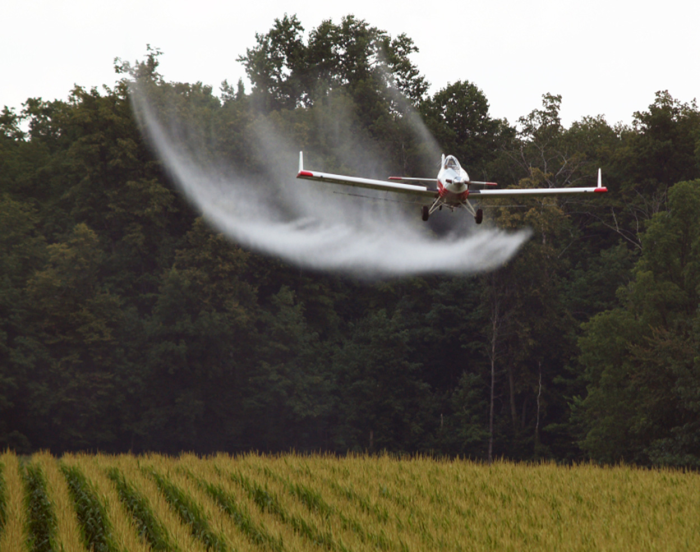


The Problem—When is it safe to spray?
Crop dusting is regulated in the province of Alberta so that it can only be conducted when wind speeds are below a certain threshold, and, when proximal to an urban area, only blowing in certain directions. In some rural areas it can be difficult to obtain accurate real-time wind speed and direction information, particularly in areas in which no Environment Canada weather station is nearby.
The Solution—Local, real-time wind data
To provide accurate wind measurements in rural areas, government agencies have set up weather stations to measure wind speed and direction. CR800 dataloggers are being used to measure the output from 05103-10 wind monitors to provide average wind speed and direction over 5 and 30 minute periods.
To make wind directions easier to understand, Campbell Scientific programmed wind direction outputs as cardinal directions (N, NE, E, etc.). RAVEN-XT cellular modems are used to provide easy, real-time access to the most recent data tables. With the help of Campbell Scientific, these RAVEN-XT modems and CR800 dataloggers were configured for point-to-point protocol, allowing for the data tables to be viewed in any web browser using their dynamic IP addresses. This enables any pilot with access to the Internet to have real-time access to wind conditions.
As these stations are installed in remote areas in which no ac power is available, providing adequate power was a significant concern. Therefore, each station is powered by two BP26 batteries and one MSX20R solar panel. Also, the CR800s are programmed to only turn on the RAVEN-XT modems each day between 5:00 a.m. and 8:00 p.m. This significantly reduces the power strain on the batteries, particularly during periods when no solar power is available to recharge the batteries. Limiting the time the modem is powered does not affect the client as crop dusting does not occur outside these periods. Daily statistics for battery voltage have also been made available over the Internet to monitor battery health over time.
Case Study Summary
Application
Wind speed and direction monitoring for crop dustingLocation
Southern Alberta, CanadaProducts Used
CR800 05103-LContributors
Matt Wright, Campbell Scientific CanadaParticipating Organizations
Government agencyMeasured Parameters
Wind speed and wind directionView the PDF